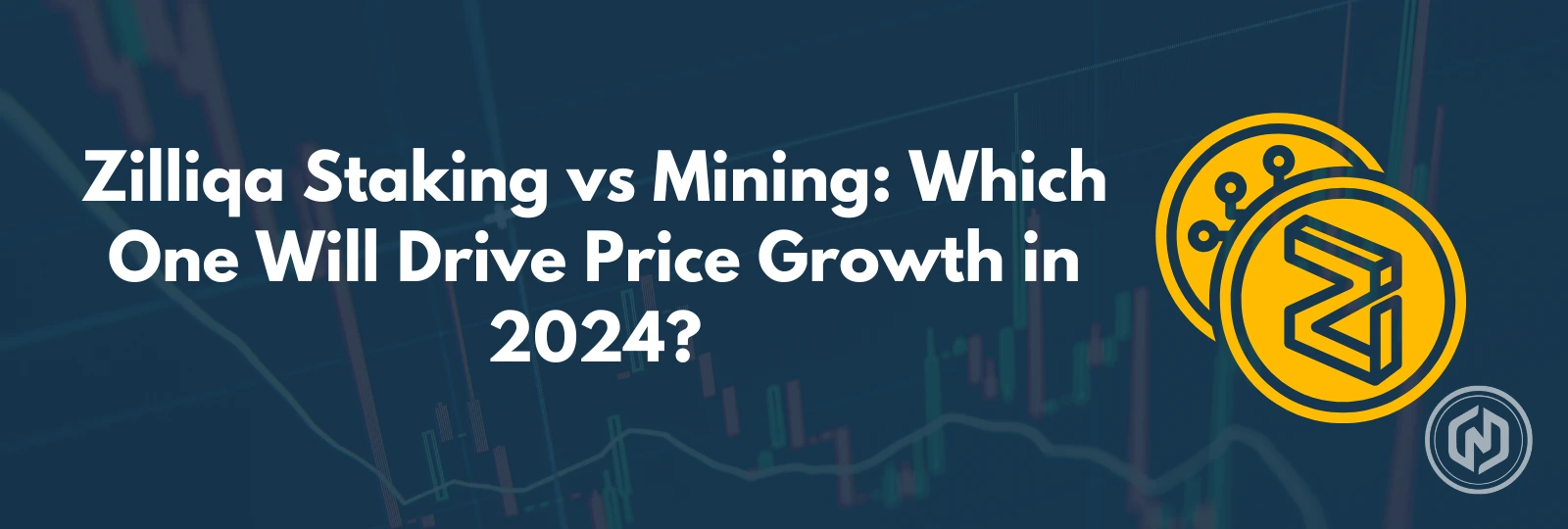Zilliqa’s blockchain is unique in its adoption of a dual consensus design, which allows key activities, staking, and mining to enhance network security and performance. Zilliqa Staking, on the other hand, is locking up ZIL tokens, by the holders, helping to maintain the network by voting, as well as earning rewards for assisting blockchain activities. When the two systems are competing for participants’ resources in the year 2024, understanding what each will bring to the price dynamics of ZIL will assist these investors in positioning themselves with respect to the Zilliqa system as it develops.
What is Zilliqa Mining?
Mining Zilliqa involves the users engaging in the validation of transactions and the securing of the network through a special hybrid consensus mechanism that incorporates Proof-of-Work (PoW) and practical Byzantine Fault Tolerant (pBFT). The mathematical equations contained in the new block are solved by the miners, who are rewarded with ZIL tokens for their efforts in creating new blocks.
Investors are attracted to Zilliqa mining’s profitability, scalability, and high throughput, which has been enabled through sharding technology. The mining process is said to reinforce network security due to the expanding of computational work and also encourages the overall decentralization of the network. Over time, as more and more miners join the network, the security of the blockchain becomes more robust, which in turn leads to increased transaction speed and faster network growth.
Staking vs Mining: A Detailed Comparison
Zilliqa staking rewards have come up to make the striking feature an attractive option for most Zilliqa holders. It offers consistent returns, typically ranging from 5% to 15% APY, depending on the platform and market conditions. This is in contrast to mining, which often requires heavy investment in hardware and continuous electricity and other costs, making staking a low barrier to entry for users. As is the case across the board, earnings potential through staking is quite average in terms of volatility.
With regard to price growth, Zilliqa mining has proven to be the strongest classical price function as it directly influences the supply aspect. This is because miners usually sell a fraction of their rewards to be able to pay their operating costs, thus applying consistent selling pressure on the market. In comparison to mining, Zilliqa staking has always locked them out longer than the circulating supply does, which supports price stability and encourages a rising price trend in the long run.
Taking a close look at scalability and adoption trends in 2024, staking has emerged to have the upper hand in attracting new users. The lower technical barriers reduce environmental impact, and user-friendly staking platforms make it more appealing to mainstream investors. Additionally, the growing emphasis laid on environmental sustainability has made many investors show a preference for staking over energy-intensive mining operations, suggesting that staking could be the primary driver of Zilliqa’s ecosystem growth in the coming years.
Market Sentiment and Investor Preferences in 2024
Cryptocurrency is moving towards the staking mechanism, and Zilliqa’s shift fits perfectly within this context of shifted demand. The high participation rate in governance voting concerning the reduction of mining rewards clearly shows not only the support from the community but also their grasp of the network’s co-marching strategy.
The declining profitability of mining operations is not an unintended consequence but a designed feature of the transition. With rewards dropping to just 12.5% of their original value by the end of 2024. With the top-notch Zilliqa network security, the network is effectively encouraging participants to explore staking as a more viable long-term option for network participation and reward earning.
Expert Opinions: Will Staking or Mining Drive Price in 2024?
The nature of resource allocation highlights the future projection of the company’s network systematically. The surplus ZIL tokens freed up from reduced mining rewards will be strategically reinvested in several critical areas: by increasing the range of reputable validators, adding multiple layers of Zilliqa network security through security audits, and incentivizing community-led investments and developments.
Using this reallocation strategy suggests that staking will have a more impactful contribution to the network’s value and its probable price appreciation. The emphasis placed on developing a reliable staking ecosystem, backed by the community and development funds, appears to be less risky and much more realistic in generating value within the Zilliqa ecosystem.
Conclusion: Which Will Drive Zilliqa’s Price Growth?
Taking into consideration the network’s vast transition strategy, the Zilliqa Price Forecast and the enthusiasts’ support, Zilliqa staking seems to be the key reason for its price increase in 2024. Miners are rewarded block by block, and there is a clear systematic reduction schedule of the mining reward, which can pave the way for future development of the network resources that are strategically focused on staking-related activities.
This transition has not only received technical support, but the community has been very active in embracing these changes. With these changes in the upcoming protocols of Zilliqa, which aim at improving to version 2.0, the shift from mining its value token to this new staking notion shows that creating, maintaining, and growing network value will follow a different approach. The distribution to community development and to securing the network even drives such surplus ZIL tokens to support this new model, thus indicating that staking is going to define Zilliqa in the years to come.

